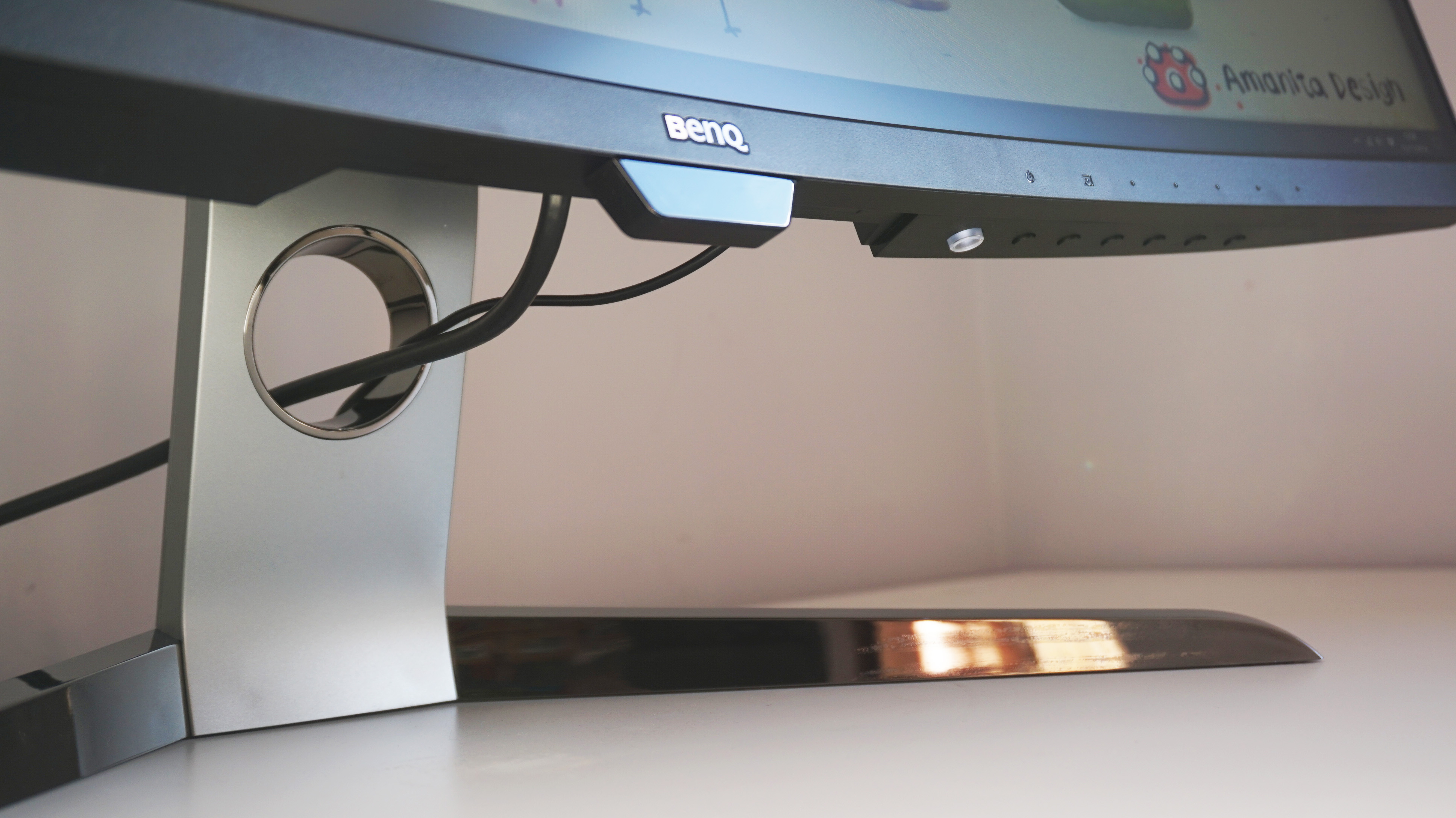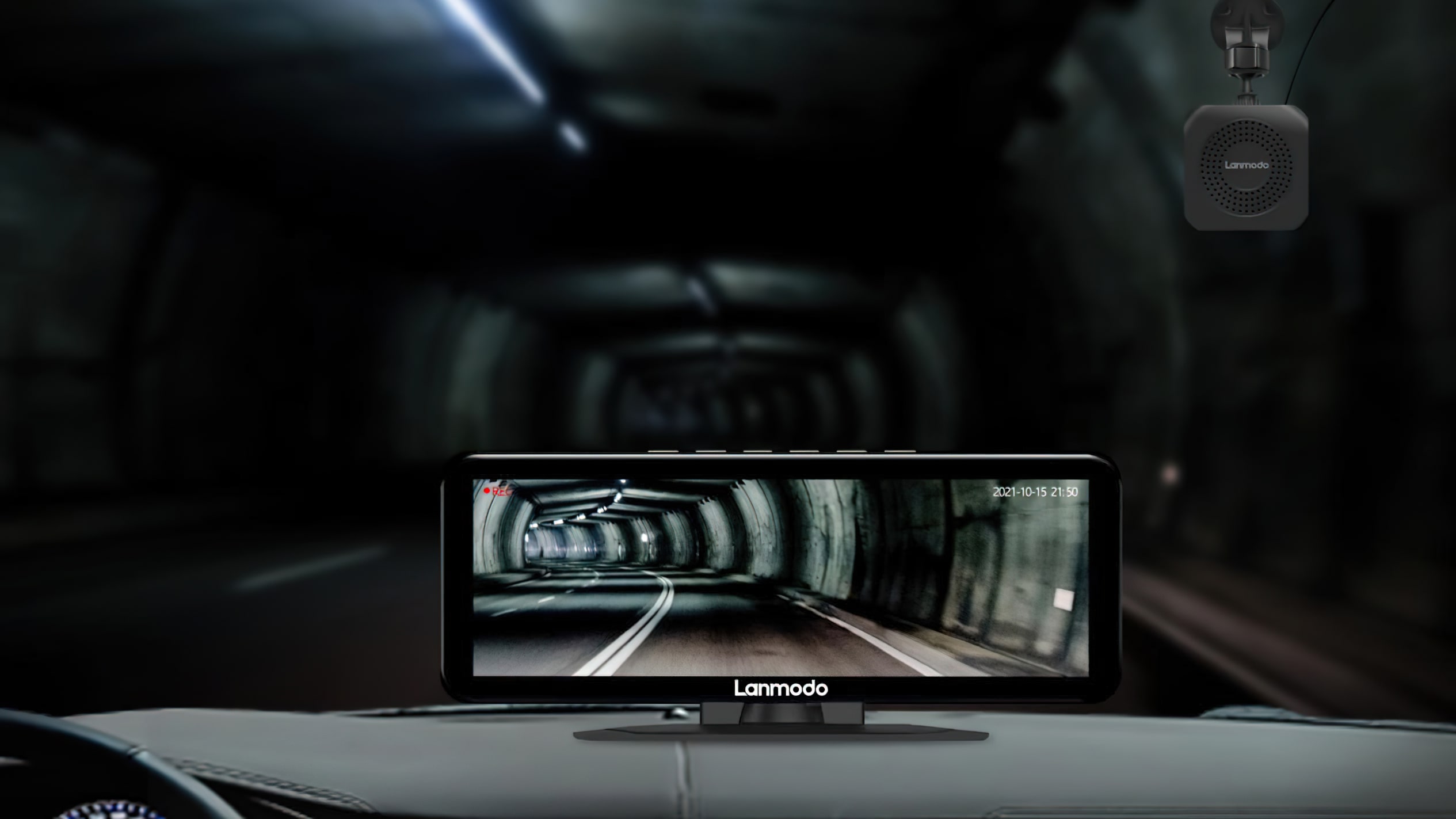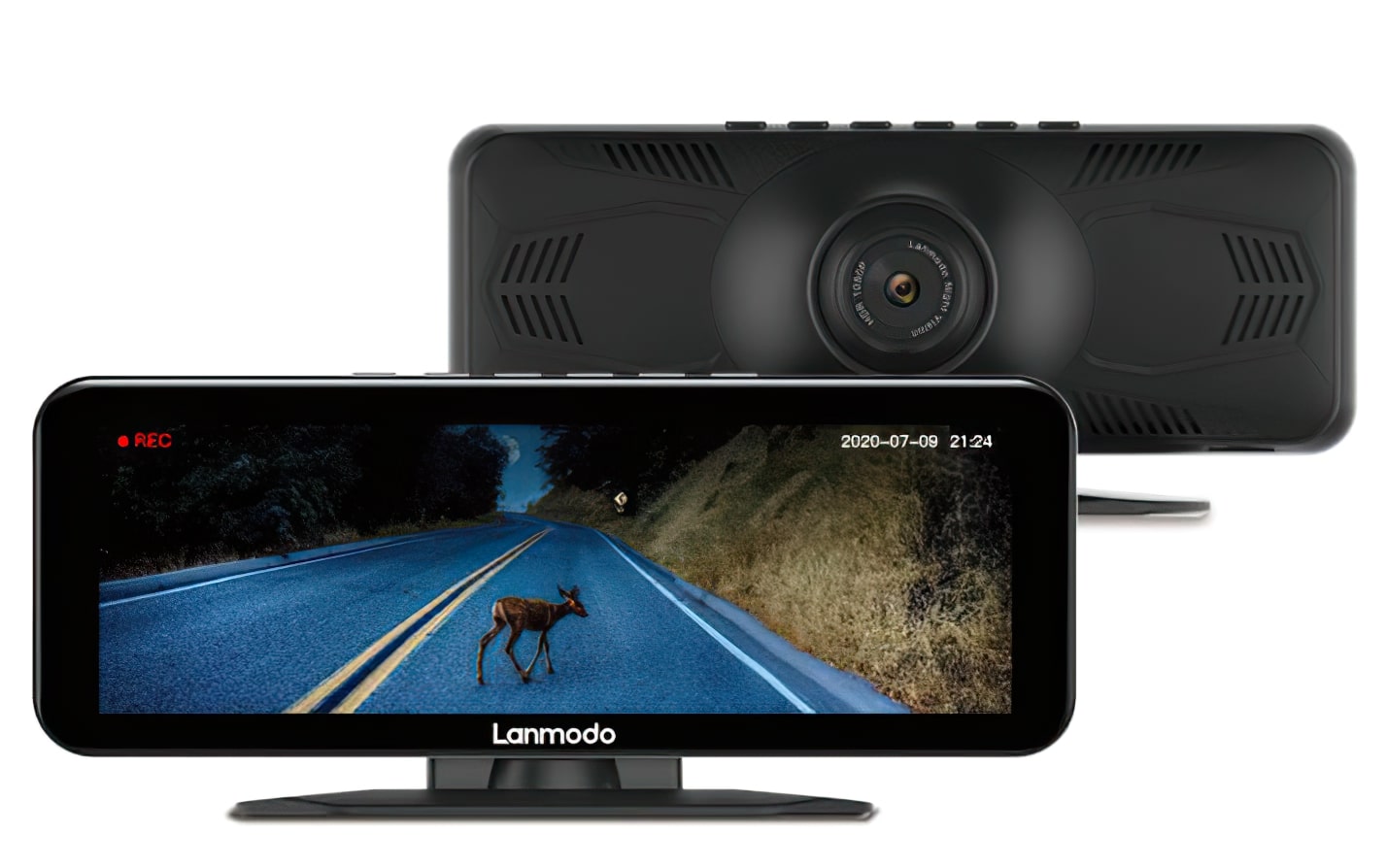
If the BenQ EX3203R title sounds acquainted, that’s as a result of there’s only one quantity separating it from its virtually an identical sibling, the EX3200R. Both screens share the identical design and have a curved 31.5in VA panel to their title, and each include excessive 144Hz refresh charges and help AMD’s adaptive body price FreeSync tech.
What units the EX3203R aside, nevertheless, is its sharper 2560×1440 decision (which immediately fixes the principle criticism I had with the 1920×1080 EX3200R), and help for FreeSync 2, AMD’s HDR (or excessive dynamic vary) customary. You’ll should fork out significantly extra for the privilege, thoughts – £469 / $700 in comparison with the EX3200R’s £315 / $320 at time of writing – however for some, that could be a worth price paying. Is it best gaming monitor materials, although? Let’s discover out.
I have to say, I’ve grown growing keen on this monitor’s total design now it’s crossed my desk for a second time. While its big display can nonetheless be a bit overwhelming at instances as a result of sheer dimension of the factor and the way shut it sits to your face, it positively seems to be the a part of a mid-to-high-end gaming monitor. I a lot want its silver, height-adjustable stand, shiny metallic toes and small, elegant bezels to its nearest competitor, the very ‘gamery’ AOC Agon AG322QC4 (one other curved 32in FreeSync 2 display with a 144Hz refresh price and 2560×1440 decision), and it simply seems to be good. No flashing LEDs, no crimson go-faster gaming stripes; only a great-looking monitor you wouldn’t be embarrassed to have in your desk.
Its 2560×1440 decision can be an enormous enchancment over the EX3200R’s 1920×1080 pixel depend and all the things from games to textual content and desktop icons look infinitely higher for it. There was nonetheless a touch of fuzziness round sure letters after I was utilizing it for normal desktop work, however there was nothing I used to be notably involved about. I wouldn’t advocate going for an excellent larger display with this decision – 32in might be the restrict for 2560×1440, identical to 27in is bordering on breaking level for 1920×1080 – however at no level did I really feel like I used to be straining my eyes or in want of yet one more eye check.
Similarly, the actual fact the EX3203R helps each AMD FreeSync 2 and VESA’s DisplayHDR 400 customary means the monitor’s total picture high quality can be significantly better than its non-HDR EX3200R sibling – at the very least as soon as I’d fiddled with its onboard menu, that’s, however extra on that in a minute.
In case you’ve forgotten, FreeSync 2 is an extension of AMD’s present adaptive body price tech, FreeSync, that provides HDR into the combination. In idea, this could imply brighter whites, blacker blacks, and extra vivid, life-like color copy on high of all the things else FreeSync does similar to tear-free and low latency gaming.
VESA’s DisplayHDR 400 customary, however, is a extra formal, industry-wide HDR customary that denotes a monitor should be capable to hit a peak brightness of 400cd/m2 (therefore the 400), 95% protection of the rec.709 color gamut (which is what the common sRGB gamut relies on), and have a most black degree of 0.40cd/m2 (the nearer to 0.00cd/m2, true black, the higher). What it doesn’t require is any type of DCI-P3 color gamut protection, which is now the de facto gamut by which everybody measures a display’s HDR chops, from TVs to Nvidia’s G-Sync HDR monitors.
Thankfully, BenQ have crammed within the gaps right here, as they declare the EX3203R can cowl 90% of the DCI-P3 gamut – placing in the identical realm as these fancy Ultra HD Premium TVs and Nvidia’s aforementioned G-Sync HDR displays such because the Asus ROG Swift PG27UQ and Acer Predator X27. In idea, anyway. So whereas FreeSync 2 HDR continues to be as obscure an ordinary as something (AMD have by no means really mentioned what its specs are, helpfully), there’s nonetheless loads to go on right here in the case of testing its image high quality.
Out of the field, my preliminary assessments regarded fairly promising. My X-rite i1 DisplayProfessional calibrator measured a really respectable black degree of 0.13cd/m2, for instance, placing it nicely inside VESA’s DisplayHDR 400 specification, in addition to a stunning excessive distinction ratio of 3184:1, offering it with deep, inky blacks and loads of element when it got here to darkish shadow areas.
Admittedly, neither of those outcomes are literally nearly as good as these I recorded on the EX3200R (the EX3200R had even deeper blacks and the next distinction ratio), however that’s most likely as a result of the EX3200R isn’t almost as vibrant total. Indeed, whereas the EX3200R maxed out at 310cd/m2 (and extra typically settled across the 275cd/m2 mark), the EX3203R managed a way more spectacular 414cd/m2 straight off the bat – and that’s with out me going anyplace close to any type of HDR management both.
Some might really feel in a different way, in fact, however personally I’d take the additional brightness over marginally deeper blacks any day. After all, the brighter a monitor can go, the higher visible impression its HDR is doubtlessly going to make whenever you ultimately come to show it on in a game, which – let’s face it – might be the principle purpose why you’d think about shopping for this monitor over anything.

The EX3203R comes with an honest collection of ports, together with a DisplayPort 1.4, two HDMI 2.Zero inputs, two USB3 ports and a headphone jack.
So far, so good, then. We’ve acquired the brightness and the black ranges; all that’s left is the color accuracy. And right here’s the place all of it begins going a bit fudge-like.
Compared to the EX3200R, the EX3203R is certainly the extra correct display out of the field. According to my i1 DisplayProfessional, for instance, the EX3203R’s VA panel is able to displaying 91.4% of the usual sRGB color gamut on its default Standard image mode and Normal color temperature, whereas its DCI-P3 color gamut protection (the usual used to measure a monitor’s HDR chops) got here in at 65.2%.
That’s not unhealthy as VA displays go, however 95% it ain’t. Fortunately, the EX3203R is certainly able to hitting that VESA goal if you happen to’re prepared to spend a couple of minutes establishing one in every of its Custom profiles as a substitute. Unhappily, the one manner I used to be capable of hit that 95% hurdle was to make use of using the EX3203R’s Colour Vibrance setting, which is type of just like the Philips 276E9QJAB‘s SmartImage mode – that’s, a largely synthetic impact that cranks up the color saturation for optimum, eye-popping impression.
With this set to its most setting of 20, my calibrated Custom mode outcomes noticed its sRGB protection rise all the way in which as much as 97.9%, whereas its DCI-P3 jumped to 86.3%. That’s nonetheless not fairly as excessive as BenQ’s claimed DCI-P3 determine of 90%, all advised, however that’s the perfect I may handle with the obtainable settings.

The BenQ’s management buttons are situated beneath the bezel, however they’re fairly intuitive for probably the most half.
So sure, the EX3203R is able to hitting the VESA DisplayHDR 400 customary, however as I famous in my Philips overview, this sort of vibrancy impact is fairly rattling intense whenever you’re simply utilizing it for odd desktop duties. The sheer vibrancy of sure colors typically felt only a bit an excessive amount of on the previous eyeballs for prolonged durations of time, and I often ended up turning it right down to its default degree of 10.
Many might nicely hate it, however man alive does it look spectacular whenever you’re taking part in games. Never earlier than have the autumnal forests of Assassin’s Creed Odyssey‘s Ancient Greece looked so rich and full of life, and ooof I’m virtually as a lot in love with these reds and oranges as I’m with Kassandra’s biceps. It makes for a surprising in-game image, no matter your emotions are about it in common desktop mode, and whenever you mix it with the EX3203R’s excessive 400+cd/m2 brightness and big display dimension it’s straightforward to really feel totally immersed in no matter world you occur to seek out your self in.
The downside, nevertheless, is that the monitor doesn’t do almost nearly as good an impression of this whizz-bang fizz-pop colors whenever you really get spherical to turning HDR on. With HDR enabled, the EX3203R’s beautiful Colour Vibrance setting is greyed out and off limits, so colors really regarded worse in HDR than they did with it switched off. Not by a lot, all advised (and turning on HDR positively regarded higher than the monitor’s default Colour Vibrance setting of 10), however neither Assassin’s Creed Odyssey or Final Fantasy XV regarded almost as fairly in HDR as they did with no HDR and maxed out Colour Vibrance.
If you thought that was problematic, it will get worse. Just just like the AOC Agon AG322QC4, the EX3202R regarded much more horrible after I turned on Assassin’s Creed Odyssey’s particular FreeSync 2 HDR setting. Not solely was the display immediately too darkish and dingy, however there was additionally nothing I may do to make it even vaguely usable. This could be the fault of the game slightly than the monitor, in fact, however if you happen to’re going to make use of HDR on the EX3203R, you’d be significantly better off sticking with its default HDR choices than you’re fiddling round with any devoted FreeSync 2 help.
The actually foolish factor concerning the EX3203R, although, is that even whenever you’ve acquired HDR enabled, its most brightness doesn’t go almost as excessive as when HDR’s turned off. When I caught my i1 DisplayProfessional over a white solar flare in Assassin’s Creed Odyssey, for example, the display was solely hitting round 380cd/m2 as a substitute of over 400cd/m2 that I measured out of the field. As a consequence, not solely do colors look much less intense with HDR turned on, however it’s not even doing its greatest brightness ranges. All in all, the EX3203R does a greater job of hitting its HDR necessities by ignoring it altogether.
Truth be advised, it is a downside I encountered on the AOC as nicely. There, the AG322QC4 maxed out at round 380cd/m2 in odd desktop mode, however may solely muster round 350cd/m2 in HDR, regardless of additionally being a VESA DisplayHDR 400 display. The twist? The AOC really did look higher in HDR than not, and had higher out of the field color accuracy (95% sRGB and 69% DCI-P3). Plus, it’s cheaper, going for simply £399 / $548 at time of writing.
Sure, the AOC doesn’t benefit from the BenQ’s Colour Vibrance mode, however name me loopy, I’d slightly purchase an HDR display that really seems to be prefer it’s doing one thing in HDR (and doing it nicely, no much less) than spend a load of cash on one that really seems to be higher with all of it turned off. Of course, all that is null and void if you happen to don’t have a suitable AMD graphics card (see my What graphics card do I need for HDR? information for more information on this), however out of the 2, I feel you’d be significantly better off with the AOC than the EX3203R. The EX3203R could be a superior monitor than the EX3200R, however neither are higher worth for cash than the AOC Agon AG322QC4.




